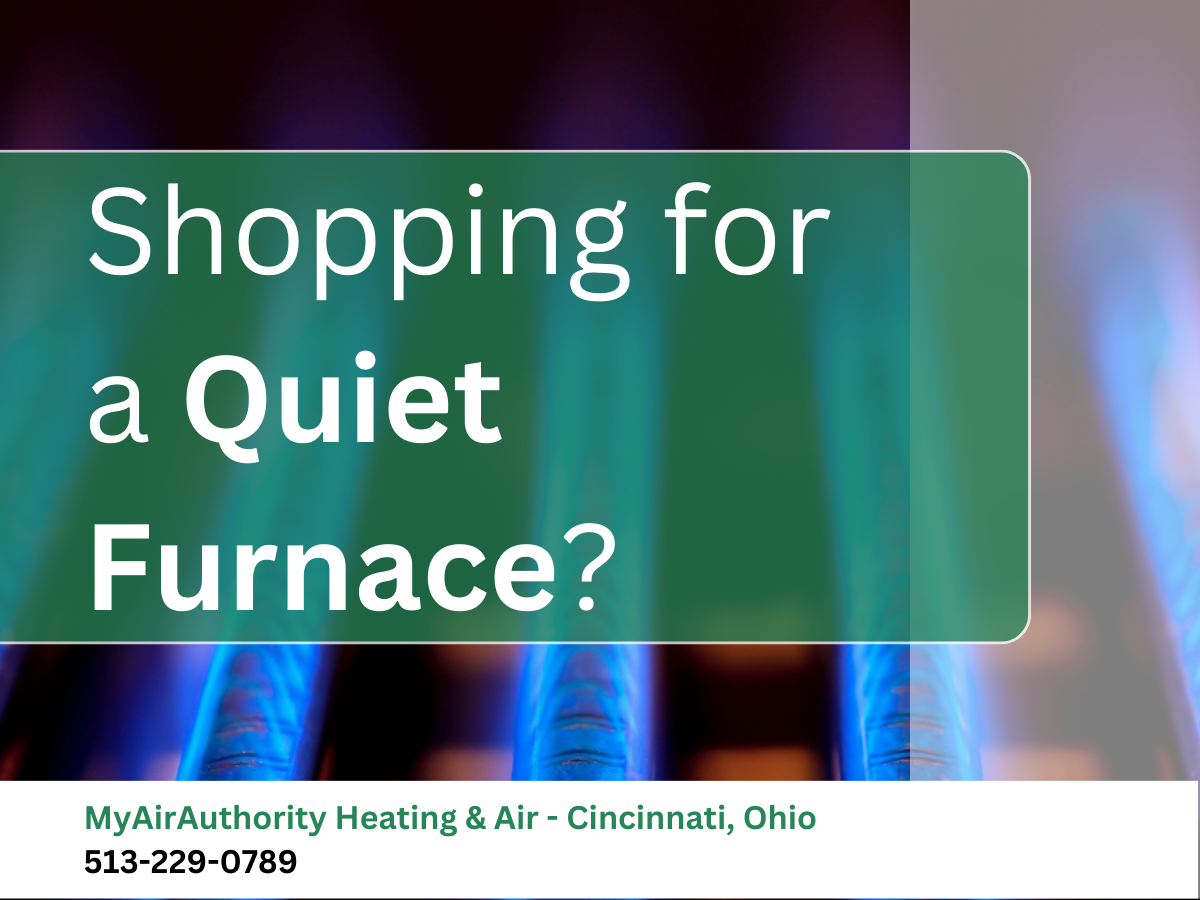- Contact Us: 513-229-0789







If you’re looking for a gas furnace that’s actually quiet, you’ll have to consider a few factors in order to choose the perfect one.
Air Authority, an HVAC installation and repair company servicing Cincinnati, Ohio, explains the two factors that make a furnace loud.
Most furnaces are designed to emit a single level of heat. It’s either ON at full heat or OFF without any heat. Two-stage combustion is different. There are two levels of heat, either On a full heat, ON at a lower heat level, or OFF.
When the furnace is on low heat, it’s quieter. This is because the blowers are cycling at a lower speed, and the combustion intensity is lower, giving off less noise.
Most of the time, two-stage gas furnaces run on “low” to maintain room temperature, then turn on high heat whenever the low heat stage isn’t warm enough during winter.
It’s one step up from a two-stage furnace design. This furnace design modulates the heat stage by gradually raising and lowering the temperature until it can operate on a low-stage setting.
This gradual self-regulation of heat output (as compared to the ON and OFF cycle of a two-stage gas furnace) allows for more precise temperature control from your thermostat, giving you comfortable, draft-free warmth.
When the modulating combustion furnace is on, its blowers operate on even lower speeds than two-stage furnaces — giving off even less noise.
And, without the noticeably loud ON/OFF cycles that accompany single and two-stage gas furnaces, modulating combustion furnaces offer an all-around quieter experience.
Modern furnaces can be installed with a sealed or open combustion chamber. The majority of furnaces are designed with a sealed combustion chamber to dampen the noise furnaces give off during a combustion cycle.
Designed with an enclosed chamber (the combustion chamber), so the air that gets used for igniting the gas comes from outside of the home through a plastic PVC pipe.
This pipe traps the combustion sound from escaping and reduces the overall noise level.
The air surrounding the furnace is used to ignite the flammable gas.
When compared with a closed combustion furnace, the difference isn’t just noise; it’s safety too.
Sealed combustion chambers offer more protection. Open combustion runs a small risk of monoxide poisoning should the gaseous air leak into your home.
Due to the risk, open combustion furnaces must adhere to code requirements issued by each state, which include specifications on proper installation and placement.
There’s an efficiency gap too. These units draw in heated air and send it up the chimney, wasting the energy used to heat the air.
Open combustion furnaces are also exposed to the elements — frost, snow drifts, and ice buildup. Several inches of snow could block your combustion area, especially if it’s located too close to the ground.
Consult with an HVAC professional before deciding on whether you should purchase a sealed or open combustion system.
The best choice when looking for a quiet furnace is to purchase a combustion-modulating design with closed combustion.
Modulating furnaces boast a whopping AFUE energy efficiency rating of 80 to 98 percent! But they can run a bit pricey: $6,000 to $10,000.
If it’s not in your budget, that’s okay. Your second-best option is a two-stage design with sealed combustion. These furnaces are quiet, affordable, and long-lasting.
For top-of-the-line Trane(™) furnaces, take a look at our in-stock options and give us a call. Air Authority’s top HVAC technicians will install your newly-purchased furnace correctly, ensuring you get the most out of your investment.
© 2024 Air Authority, All Rights Reserved